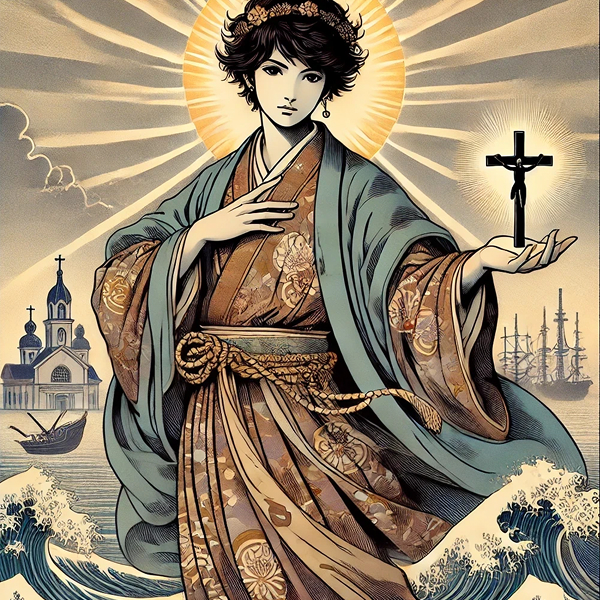Amakusa Shirō: The Divine Rebel of Japan’s Christian History

Contents
What if a teenage rebel once seen as a threat became a god in the eyes of his people?
In the coastal beauty of Amakusa, where serene seas meet hidden Christian chapels, a dramatic legend rises from history: the story of Amakusa Shirō. At just sixteen, he led one of Japan’s most significant uprisings—the Shimabara-Amakusa Rebellion—only to be remembered not merely as a martyr, but as a divine figure known as Amakusa no Ōgami.
Blending history with myth, his tale is one of faith, resistance, and a spiritual legacy that still echoes through shrines, folklore, and still lives on in the hearts of believers.
Who Was Amakusa Shirō? A Teenage Martyr and Christian Leader
Born as Masuda Shirō Tokisada, Amakusa Shirō was only 16 when he became the charismatic leader of Christian peasants rebelling against the oppressive rule of the Tokugawa shogunate in 1637. With his striking appearance and magnetic aura, he was seen not only as a political leader but also a messianic figure, believed to be chosen by God.
Rooted in Christian doctrine, Shirō offered the suffering farmers both hope and spiritual salvation. His leadership symbolized resistance against religious persecution and social injustice.
Miracles and Divine Powers: The Mythology of Shirō
Legend portrays Amakusa Shirō as more than just a human. Stories tell of supernatural abilities that contributed to his deification. These include:
- Walking effortlessly across water
- Remaining unscathed by enemy arrows
- Manifesting bread through prayer in times of famine
- Healing the sick with a single utterance
Such tales elevated him to divine status among his followers, reinforcing his image as a God-sent savior—eventually worshipped as Amakusa no Ōgami.
The Siege of Hara Castle and Shirō’s Ascension to Heaven
In 1638, during the final phase of the rebellion, Shirō was defeated and reportedly executed at Hara Castle. However, many of his devotees refused to believe in his death. Instead, legends tell of miraculous events:
- His body radiating light as it ascended to the heavens
- A holy spring emerging from the blood-soaked ground
- His spiritual presence still lingering in the ruins of Hara Castle
These legends transformed Shirō from a martyred rebel into a divine protector, embodying both sacrifice and eternal faith.
Living Legacy: Shrines, Altars, and Cultural Heritage
Even today, shrines and altars dedicated to Amakusa Shirō can be found in the regions of Amakusa and Shimabara. Locals still refer to him affectionately as Shirō-sama or Amakusa Shirō Ōgami, blending Christian reverence with folk religious traditions.
At the Amakusa Shirō Memorial Hall, visitors can explore his life, the rebellion, and the evolution of his divine status. It stands as a tribute to his legacy of hope, resistance, and spiritual courage.
Why the Legend of Amakusa Shirō Endures
Amakusa Shirō remains a powerful symbol of faith, martyrdom, and resistance in Japan’s complex religious history. His transformation from historical figure to mythical deity underscores Japan’s rich tradition of intertwining spiritual belief with lived experience.
For those interested in Christian heritage in Japan, or tales of divine warriors, the story of Amakusa no Ōgami is a must-know legend that continues to inspire across generations.